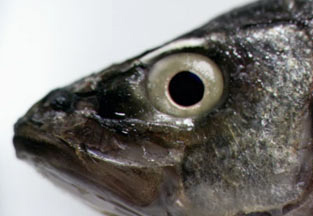 |
Maxwell Fisheye Lens | Maxwell Legacy Concepts |
|---|
In a nutshell |
The Maxwell fisheye lens is the product of Maxwell's exploration up one of the alleys of inquiry that he was so fond of wandering, not with the purpose of inventing something but merely for the curiosity of finding out. Maxwell's perspicuity was such that he often did end up with insight beyond that of any of his contemporaries. In 1854 Maxwell presented about 3 pages of subtle geometry as the solution to a mathematical problem relating to the passage of rays through a sphere of variable refractive index. At the end he added a 'note'. The possibility of the existence of a medium of this kind possessing remarkable optical properties, was suggested by the contemplation of the structure of the crystalline lens in fish'. One of the banes of my student days was lecturers presenting an extended discourse solving an apparently abstract mathematical problem only to disclose at the end that the mathematics was modelling a real situation. Maxwell is here guilty as charged. Nonetheless it was an impressive achievement to show that a lens whose refractive index increased radially towards a point could form perfect images. It may well have been the first ever investigation into the imaging possibilities of a gradient refractive index material. Had an investigation into fish vision been the prime purpose, Maxwell could have developed his piece much further but in this case the mathematics was the message. A gradient refractive index lens is not something that is easy to manufacture and Maxwell's discussion didn't lead to new technology in his day. In the 20th century Luneburg and others have discussed the imaging of variants and in more recent times the idea has been applied to microwave devices. The' fisheye lens', so called, in photography is not a development of Maxwell's fisheye but a 20th century design using normal lens technology to create an extreme wide-angle image, almost hemispherical in coverage. |
 |
|---|
| Technical detail | Maxwell's paper discusses a situation where the refractive index m varies as m = m0 /(1 + r/a)2, where r is the radial distance from a point O where the refractive index is m0 and the constant 'a' scales how quickly the refractive index decreases with distance from this point. He analyses the situation from the viewpoint of geometrical optics. He first shows that all rays starting from any point A will travel in circular arcs in such a medium and end up passing through an image point B, as shown in the sketch on the right. B is on the other side of the centre from A such that OB = a2/OA. Although the distribution of refractive index is radial from O, the medium has no defined boundaries. The second diagram on the right is based on Maxwell's sketch, showing how a point outside can be perfectly imaged within (in geometrical optics terms). O is the centre of a variable index sphere, the concentric circles hinting at the refractive index decrease from the centre, though the change is continuous with Maxwell's expression above. C is an external point from which light travels straight until it hits the sphere at P. Within the sphere the light travels in a circular path, shown as a red solid line. The variable index sphere has its surface hollowed out in the shape of a sphere centred on C of radius CP. The ray shown from C to P to B in the plane of the figure is therefore representative of all rays coming from C in planes formed by rotating the figure about the line CB. Hence B is the image of C within the graded index sphere. Maxwell shows how to calculate the distance OB. The entire exercise is an impressive piece of geometric visualisation by Maxwell that does not have much to do with the reality of fish eyes. However it did introduce the world to the possibilities of graded index lenses that potentially open up a way of imaging whose detail is different from conventional lenses, though of course still a matter of refraction. Reference: Maxwell's original piece in the Cambridge and Dublin Mathematical Journal for Feb. 1854 is most easily found in his collected works, Ed. W. D. Niven, The Scientific Papers of James Clerk Maxwell, vol. 1, pp 76 - 79 [CUP 1890]. JSR 2016
|
|
|---|---|---|